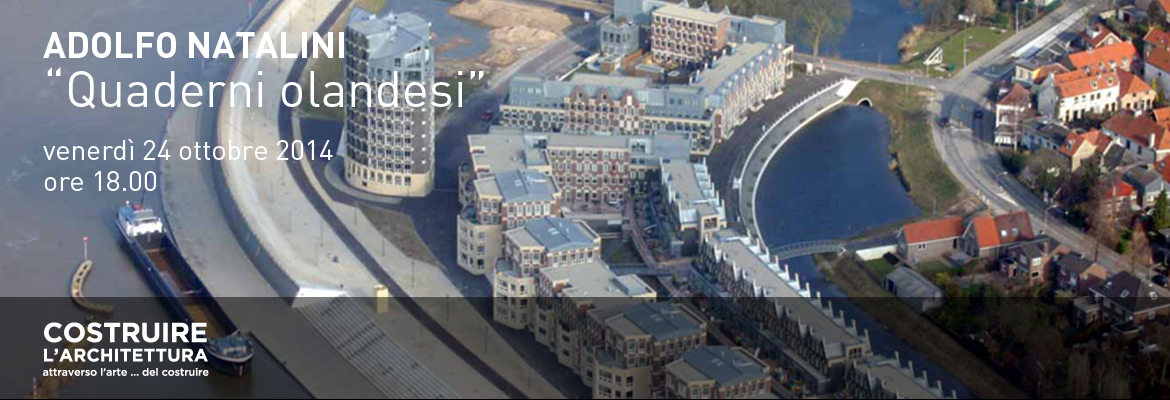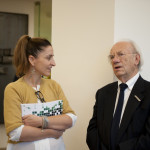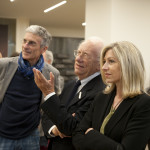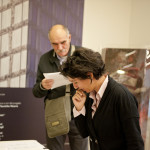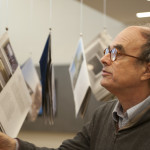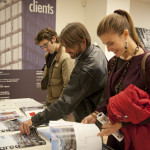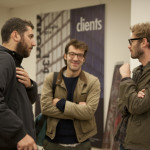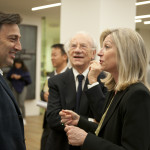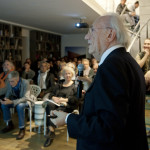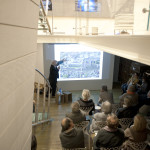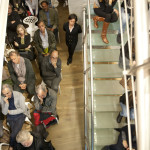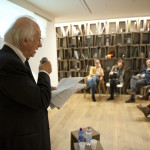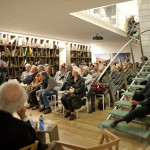Venerdì – 24 ottobre 2014 – ore 18.00
Costruire l’architettura – Adolfo Natalini “Quaderni olandesi”
Adolfo Natalini
Vive a Firenze fin da studente, più in studio che in casa, non è mai emigrato. Viaggia, certo, e molto, come chi è curioso. Ma le sue architetture hanno trovato patria elettiva nei Paesi Bassi. Adolfo Natalini ne ha esplorato paesaggi, città, palazzi, fino a sentirsi erede di Ludovico Guicciardini, che cinque secoli fa ebbe un’analoga attrazione per quei paesi, lasciandocene una minuta descrizione.
Ma qui pare che sia piuttosto l’Olanda ad essere stata conquistata dall’architettura di Natalini. Dapprima, con altri e come altri, ha dovuto compiere l’opera di demolizione della modernità. La modernità che intendeva dettar legge e già per questo reclamava una radicale rivoluzione. Un classico parricidio, che riconosce il ruolo genitoriale e insieme la necessità di oltrepassarlo spedendolo nel passato. Per poi riconquistare l’architettura, che Natalini stesso ama chiamare “normale”, più che “tradizionale”, ossia ciò che del passato, dei padri più lontani, in altre parole del “patrimonio”, è traducibile in ogni tempo.
La cultura architettonica olandese, sembra aver compiuto, anche con l’opera di Natalini, il medesimo percorso. Mentre le mirabolanti e soprendenti provocazioni di Superstudio vanno viaggiando in mostre e depositandosi in musei nei vari angoli del mondo. Sono adesso oggetto mitologico, come ogni altra cosa che il culto del patriminio del nostro tempo trasforma in traccia mnemonica. L’architettura “normale” dona l’abitare quaotidiano e vive la sua vita serena in Olanda e altrove. Quella “radicale” di quarant’anni fa è già monumento di sé stessa.
Francesco Ventura
Friday – oct 24th 2014 – 6.00 pm
Building the architecture – Adolfo Natalini “Dutch notebooks”
Adolfo Natalini
He has lived in Florence since he was a student, spending more time in the studio than at home. He never emigrated. Of course he travels — and a lot — as a curious person. But his architecture has found its adoptive country in the Netherlands. Adolfo Natalini has explored its landscapes, cities, and buildings, making him seem like an heir to Ludovico Guicciardini, who five hundred years earlier had felt a similar pull to these lands and left behind a meticulous description of them.
But, in this case, it seems that it is actually the Netherlands that was conquered by Natalini’s architecture. First — with others and like others — he had to demolish modernity. Modernity wanted to set the law and for that it was asking for a radical revolution. It was a classic case of patricide, understanding its role as a forefather, along with the need to go beyond it and put it into the past. To then go on and regain architecture that Natalini likes to call “normal,” rather than “traditional,” that which is of the past, of distant forebears, in other words part of the “heritage,” can be translated into any time.
Dutch architectural culture seems to have taken the same path, including through Natalini’s work. While Superstudio’s incredible, astonishing provocations travel in exhibitions and have settled in museums in all corners of the world, they have become mythological, like everything that our era’s cult of heritage turns into a mark of memory. “Normal” architecture gives the gift of everyday dwellings and spends its life quietly in the Netherlands and elsewhere. That “radical” architecture of forty years ago is already a monument to itself.
Francesco Ventura
